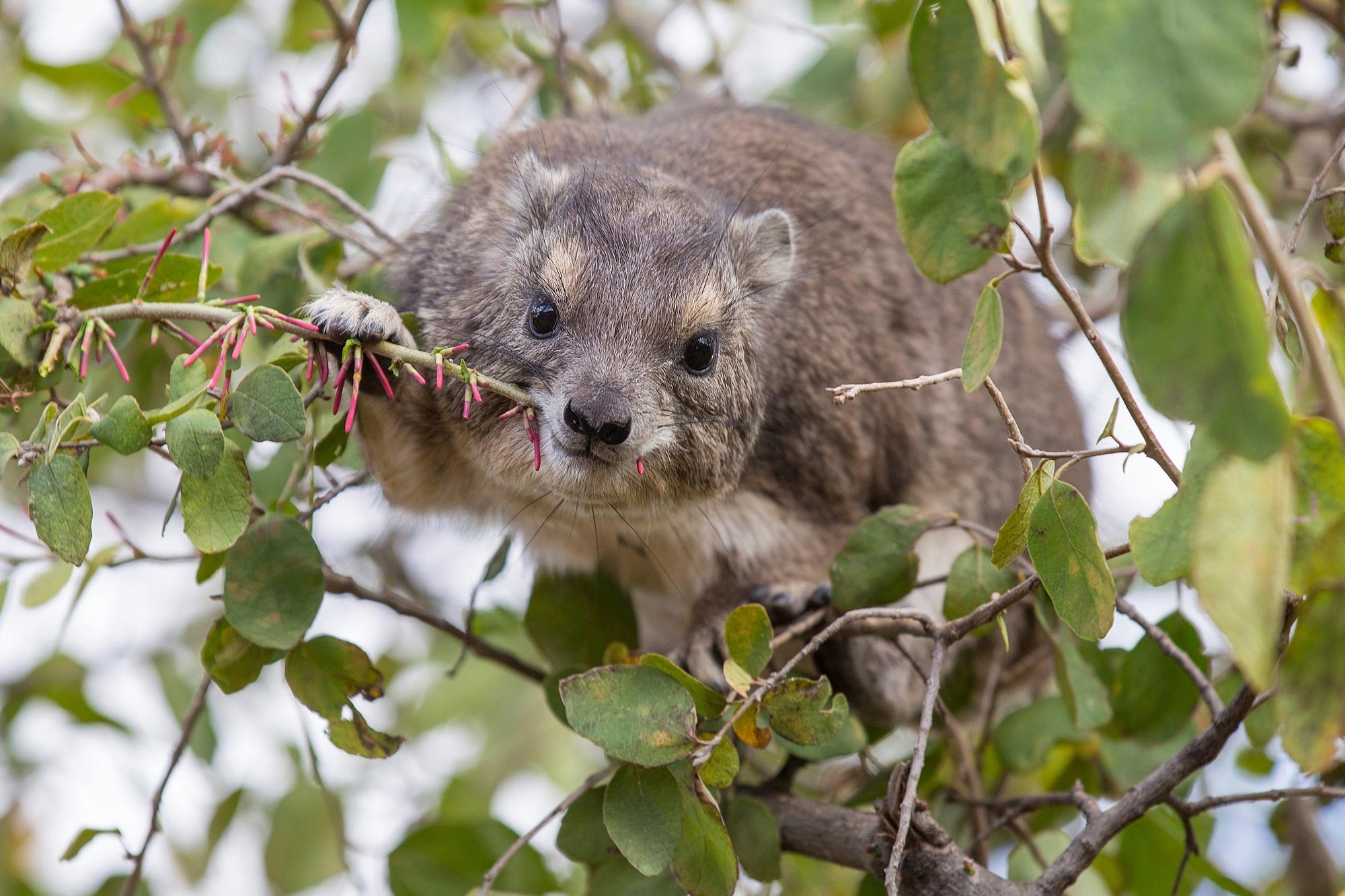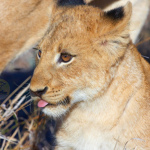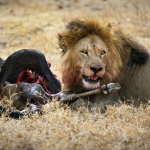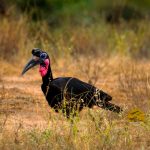The Tree Hyrax of Uganda: The Nocturnal Mammal that Remains Elusive.
The Tree Hyrax, scientifically referred to as Dendrohyrax, is one of those intriguing, yet less-heralded species in Uganda’s varied landscapes of wildlife. This small, herbivorous mammal is an odd representative of the hyrax family, which also includes other members such as rock hyraxes and even marine mammals like elephant seals and manatees. This article looks at the physical appearance of this animal, its habitat, its behaviour, feeding, reproduction, and conservation status as a means to show its importance in the ecosystem of Uganda.
Physical Characteristics of the Tree Hyrax.
The tree hyraxes are medium-sized mammals, weighing approximately 3.5 to 5.5 kg, with a length of about 50 to 60 cm. They possess a stout body, short legs, and a rounded face carrying big, expressive eyes. Their fur is thick and mostly greyish-brown to reddish-brown in color, acting as excellent camouflage against tree barks and foliage in their forest habitats.
Like hyraxes in general, tree hyraxes have short bushy tails and their special foot structure, which holds them onto the tree branch. The feet have special pads enabling them to climb and providing traction for movement around in the trees.
Habitat of Tree Hyrax in Uganda.
The tree hyrax is largely arboreal, and they virtually spend life on trees. It happens in tropical and subtropical forests, particularly montane and moist forest, where there is considerable cover and feeding ground. They are quite common in Uganda’s protected areas, especially in Bwindi Impenetrable National Park, Kibale Forest National Park, and the forests around the Rwenzori Mountains.
Their love for dense vegetation provides a cover against predator organisms and provides them with a liaison of leaves, fruits, and flowers that they can forage. Tree hyraxes are vulnerable to disturbance habitats and thus to deforestation and human encroachment.
Behavior and Social Structure.
The Nocturnal Tree hyraxes are active from late afternoon into the night when foraging in trees. They also possess a very distinctive set of vocal calls that consist of whistles, barks, and grunts-one of the most noticeable sounds echoing through the forest. These calls are very important for communication, locating each other, and territorial establishment.
Most tree hyraxes are seen in small family groups socially or pairs, normally consisting of one breeding pair and their offspring. They have a hierarchical social organization, where dominant individuals maintain territories, which they scent-mark. Most shy and secretive, they can be quite curious and will sometimes explore their surroundings under safe conditions.
Diet of the Tree Hyrax.
Tree hyraxes are herbivores, their diet mainly composed of leaves, fruits, flowers, and barks. They are also selective feeders, thus always going for tender leaves and fruits rich in nutritional value. The digestive system adapts to extract from the fibrous plant material what it needs, but its slow metabolism needs greater food intake in order to sustain energy demand.
They contribute to the health of their forest ecosystems by their feeding habits, dispersing seeds and otherwise maintaining the growth of vegetation by their selective browsing.
Reproduction of the Tree Hyrax.
The breeding season is variable in tree hyraxes, depending on the environmental conditions, although they may be throughout the year. Females give birth to a single offspring born fully furred with its eyes open after a gestation period of roughly 7 to 8 months. The juveniles remain very attached to their mothers during the first couple of weeks of life. Their mothers keep them hidden from possible dangers in the safety of tree hollows or dense foliage.
As they mature, young tree hyraxes start joining their mother on foraging expeditions, teaching them vital survival skills. They become sexually mature by the time they reach 18 months in age and may still stay in the family group until they are ready to establish their territory.
Conservation Status.
While habitat loss from deforestation and expansion of agriculture and human settlements affects them, the IUCN has classified the tree hyrax as Least Concern. Additional threats from hunters through hunting for bushmeat occur in some areas.
Conservation in Uganda involves creating national parks and other protected areas to protect the habitats of tree hyrax. Ecotourism coupled with community-based conservation initiatives has greatly contributed to improving awareness on the importance of preserving this unique species and its forest ecosystem.
Importance in the Ecosystem.
Tree hyraxes, thus, play an important role in the health of forest ecosystems: normally acting in vegetation dynamic processes, impacting plant growth by their herbivory. As seed dispersers, their addition to the richness of plant diversity maintains overall health and resilience in their ecosystems.
Conclusion on Tree Hyrax in Uganda.
The tree hyrax is a remarkable but often overlooked species in Uganda’s rich biodiversity. This uniqueness in characteristics, special behavioral traits, and ecological importance gives this nocturnal mammal a status of protection and conservation. Further conservation and making masses aware would ensure that the beauty and importance of the tree hyrax and the forests it stays in are passed on to generations to come. Whether one is a wildlife enthusiast, a researcher, or an inquisitive traveler in Uganda, catching a glimpse of the tree hyrax in their natural habitat always guarantees lifetime memories and further justifies the importance of preserving diverse Ugandan wildlife.











